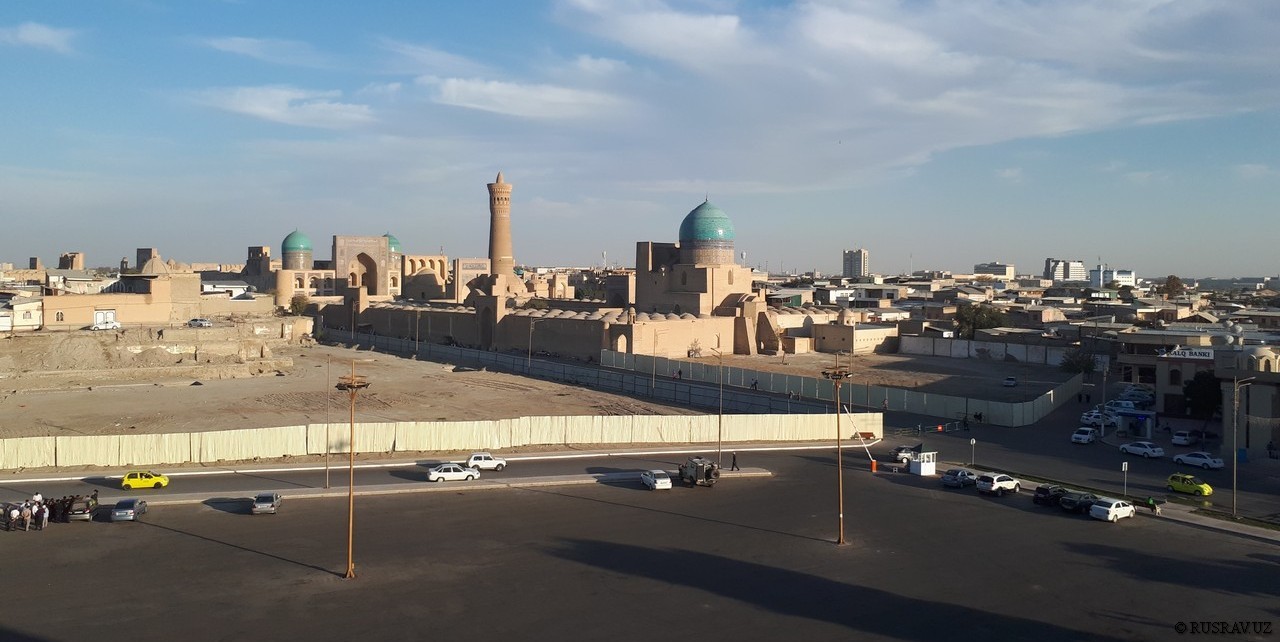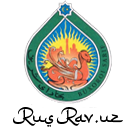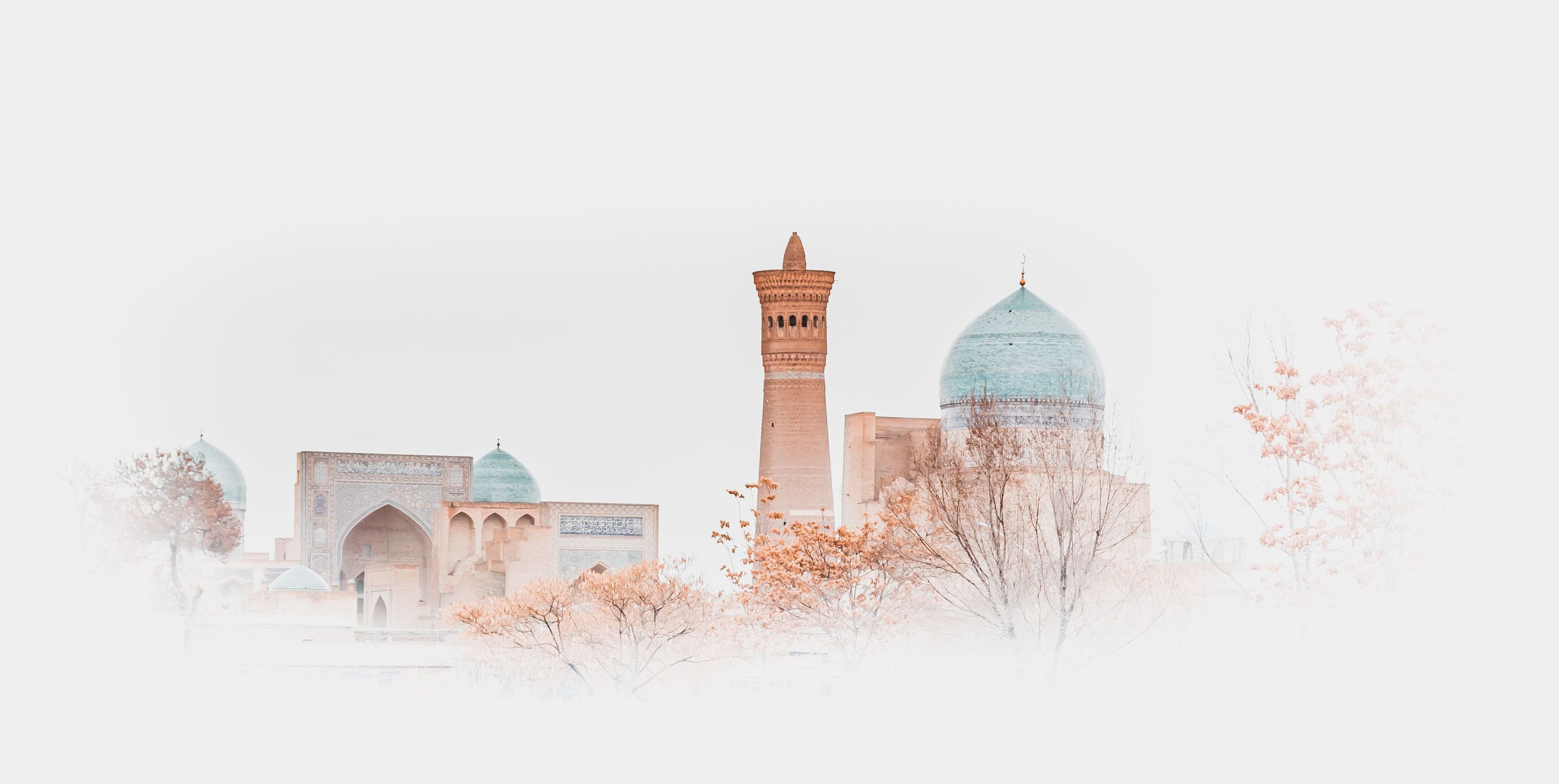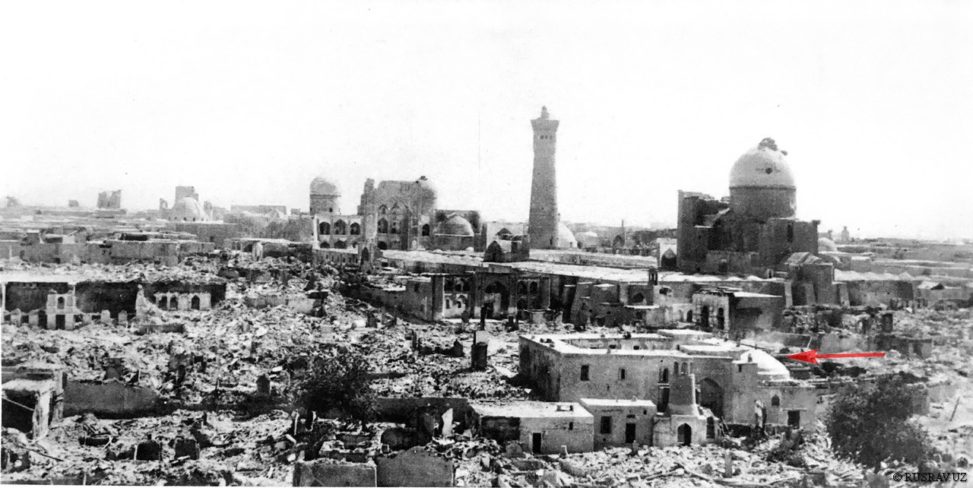Ayaz Biy Madrasah.
In the Parfenov-Fenin map, the madrasah is indicated by the number # 376.
The madrasah was located in the Kozi Urda quarter, the quarter itself was in the central part of the old city of Bukhara, and according to the methodology of O.A.Sukhareva, it belonged to the djarib Gaukushon.
The Kozi-urda quarter, or Ohundi Mullo Usmon (name of the highest clergyman) consisted of approximately 40 houses. Among the population there were many artisans, including 4 tinkers (misgar), whose workshops were located right there, in the quarter. They worked for landlords who had shops in the shopping arcade of the Arroqi Misgari quarter. Misgars from the Kozi-urda quarter made all kinds of copper utensils: cups (braid), jugs with a spout and a handle (oftobahoyi urganjigi), trays (lali / layli), etc. The dishes were made both simple and hammered.
In the quarter there was a mosque and two madrassas: Khodja Davlat and Ayaz-biy.
Read more [Closed]
We present interesting material (3 excerpts from the book) about the customer of the madrasah – Ayaz-biy, which is listed in the book of the Russian Orientalist scientist, corresponding member of the St. Petersburg Academy of Sciences – N.V. Khanykov (1822-1878) “Description of the Bukhara Khanate” (St. Petersburg ., 1843):
1) Emir Nasrulla Bagadur Khan Melik al-Mumenin, is the second son of Amir Seyid. He spent the first years of his life at the court of his father, but later he was entrusted with the administration of the city of Karshi with its district. Knowing that, in order, the throne should not be given to him, but to his brother Hussein, he felt that he would need to acquire it not by peaceful means; and therefore it was useful for him to persuade as much as possible sipaev, in particular the elders and the most influential; he began to tie affectionate gifts to himself, shared with them everything, gave them everything that they liked from the inhabitants of the city entrusted to him, and that he immediately took without retaliation, making it clear that his mercies would increase even more if fate brought him the throne ; besides, he knew well that in Bukhara itself it was necessary to have assistants and chose two: Hakim Kush-Begi and the released slave Amir-Seyid Ayaz, who had the position of topchy-bashi, by his insinuity, he completely tied them to himself.
2) In such circumstances, Kush-Begi and Ayaz-Topchi-Bashi wrote a letter to Emir, in which they explained that they would give him the city if he was obliged not to touch the residents. The emir demanded evidence and Ayaz promised to break the big gun, which had a very large weight, given to him to protect the Samarkand Gate, and in fact did it; then Emir ordered to attack the city from two sides; from the side of the Imam gate and from the gate of Sallahkhana. Ayaz opened the first to him, and on March 22, 1826, he solemnly sat in the palace of his father, ordering to plunder the houses of the adherents of Omar Khan.
3) Kush-Begi was first exiled to Karshi, then to Nurata, finally called to Bukhara and put in prison in the palace; his father-in-law Ayaz-topchi-bashi, for important services rendered to Emir upon accession to the throne, was made by Biy, the governor of Samarkand, and showered with money; but he felt that his death was near when he recognized the fate of Kush-Begi: nevertheless, he could not clearly quarrel against Emir, and therefore, when he called him to Bukhara, he immediately appeared; but the emir was too vulnerable to do something here. He also understood Ayaz’s fears and believed that he could hide part of his wealth, transfer it to his son and thus save at least something from him: that’s why he received it very well and ordered him to put on a gold bathrobe and tie it to him the head of a golden turban, to bring an excellent argamak with a golden harness, and even he himself left the palace and put him on the saddle. Ayaz was frightened of such mercy, stepped off his horse again and bowed his head and said that he knew that he was guilty in front of the Emir and asked him to punish him immediately; Nasrulla hugged him, thanked him, for his former services, and with snake caresses calmed down the old man’s suspicions. Ayaz returned to Samarkand and received twice the most favorable answers from Emir to his reports, he thought that the storm had passed and that Emir did not include him in the disgrace that befell Kush-Begi, but his delusion did not last long: he was again called to Bukhara and; put in the same dungeon with Kush-Begi, where they were stabbed to death in 1840 in the spring … “
Nowadays there are no buildings on this place, the road of Khodja Nurabad street (formerly Kommunarov) passes nearby.






Comments are closed.